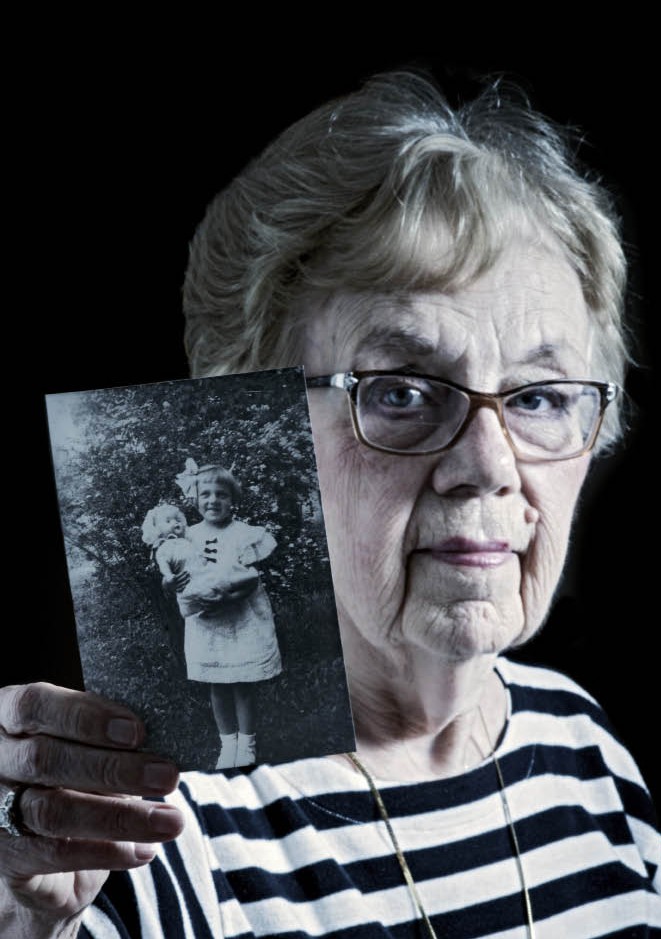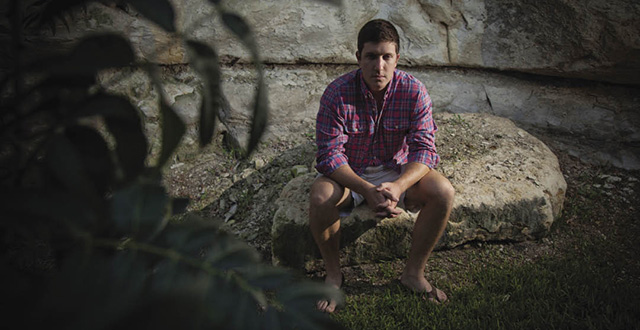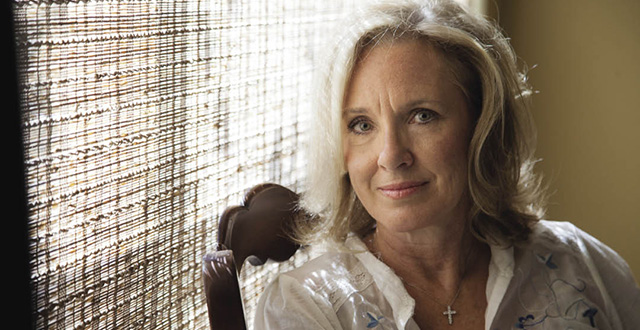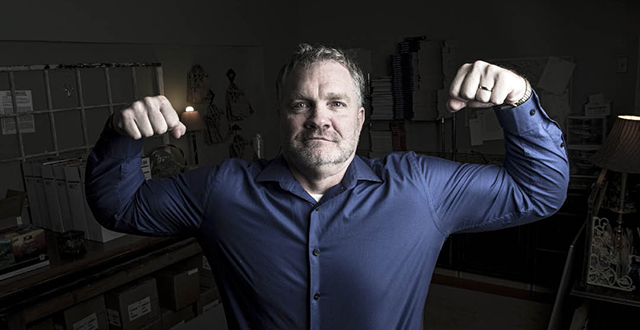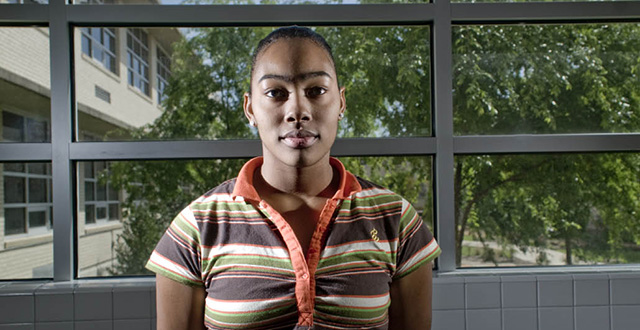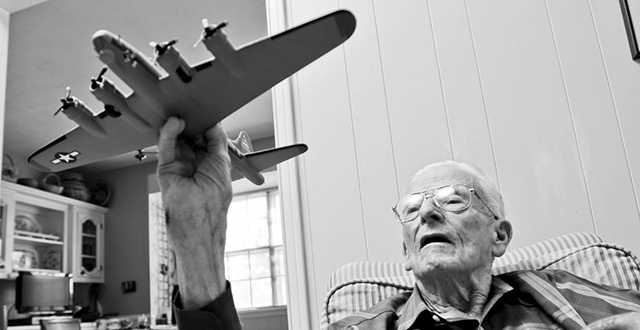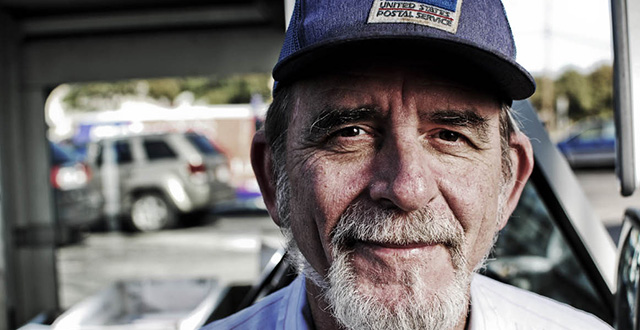Lake Highlands residents share stories of near misses, miraculous recoveries and other near-death experiences.
A slip, a lump, the doctor’s call — the end can arrive in a flash or approach stealthily. Why do some make it when others do not? How does a near-fatal event impact a subsequent life? Our subjects, who have forcibly faced their own mortality, can’t say for sure. But because of their respective experiences, they do tell us with conviction that life is precarious and not to be taken for granted.
The Girl Who Fell Down a Well
His sister Phyllis, 6, ate lunch in their kitchen with a neighbor, Louis. Unnoticed by the children, two workmen pulled up outside. There to maintain the water pipe that served the Drenthe, Mich., neighborhood’s Victorian-era residences, the men removed a 36-inch-wide sidewalk manhole cover before returning to their pickup truck, possibly to retrieve some tools, Phyllis retrospectively guesses.
With tummies full, Phyllis and Louis burst from the house, bounding toward an afternoon of play. It was a warm, sunny day, Phyllis recalls.
Ivan emerged from the house behind the youngsters.
“She was running; then she disappeared,” says Ivan, who is now a medical doctor in Grand Prairie.
That’s when the 28-foot-deep well — which contained some 14 feet of water — swallowed the little girl.
“I scraped down the sides of the concrete walls of the well. I remember the greyness and the gurgling sound of the water as I sank. Then I floated back, got my head above the water, grabbed and shimmied up this skinny iron pipe. I looked up and there were the workmen staring down at me — I’ll never forget the looks of horror and bewilderment on their faces.”
Even at the top of the pipe, she was still six feet from the sidewalk above. Phyllis thought about her brother. The ladder. She yelled instructions to the men.
Ivan was already there. “I heard the screaming. I right away understood what had happened, and I went straight for the ladder.”
It all happened within seconds — the men were dangling Ivan’s ladder down the hole. It was the perfect length. Tiny Phyllis grabbed and rode it to safety.
By the time their parents (along with Louis, who had fetched his mother) came running, their daughter was back on solid ground — bruised and scratched, crying and shaking, Ivan says, but otherwise unharmed.
A panicked 6-year-old couldn’t have lasted long in that deep, dark, watery well, Phyllis knows now. When she retells the story, people remark how weird it is that the ladder just happened to be there.
“There’s a word for that,” Ivan says. “Providential.”
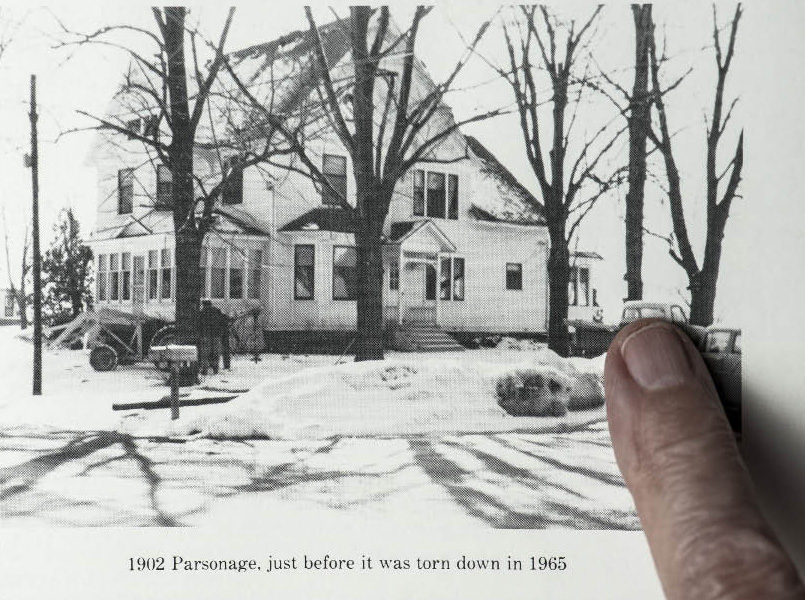 Phyllis knew her fall was terrifying. For years she burst into tears anytime anyone brought it up. She did not actively think about why she lived. In fact, only recently did she consciously realize she “almost didn’t make it past 6.”
Phyllis knew her fall was terrifying. For years she burst into tears anytime anyone brought it up. She did not actively think about why she lived. In fact, only recently did she consciously realize she “almost didn’t make it past 6.”
Yet deep down she thinks she knew she’d been given a second chance. In the years following the plunge, Phyllis moved to Lake Highlands, married and raised four children. In her 40s, she went to school and obtained a bachelor’s degree in urban studies. She lost her husband, when he was just 48, to a heart attack. She launched a career with the U.S. government investigating nonprofit and charity fraud. When she tired of busting people, she says, she became a foreign-service officer. She enjoyed missionary efforts and worked with orphaned Sudanese refugees in Egypt.
In her 70s she enrolled at Perkins School of Theology at Southern Methodist University. She was ready to follow in her father’s footsteps and become a pastor. It was something she never expected to do, she says. Today she serves as associate pastor at Lake Highlands Presbyterian, where her main role involves building a program to assist church members who are homebound because of medical issues.
She recently led a workshop that required participants to share “significant life events,” so she offered her story about the well. “It really was the first time I recognized what a big deal it was,” she says. People asked her again and again to retell it, so she eventually wrote it down, as clearly as she could recall. Though it happened more than 75 years ago, Phyllis remembers the faces of those workmen peering down at her “so clearly [she] could sit here and sketch them for you,” she says.
She remembers the confusion in their expressions and the assuredness and intuition with which two children responded.
It’s safe to say that a number of people benefitted from Phyllis’s survival — Ivan, for one.
“She is a warm and generous person who has made marvelous contributions to society,” her big brother says. “We all love her very much. I am glad she made it out of there.”
A 40-foot fall
It was nearing sundown in Marble Falls, a familiar retreat for Texas campers. Cameron Alspaw and his buddies, all high school juniors, were buzzing after a day of scaling giant rocks. They were feeling superior, Cameron says. “We were the senior scouts on the trip. We were thinking we were invincible. I had already climbed this 40-foot cliff once without the proper safety equipment. We were really just being ridiculous.”
The 2008 Lake Highlands High School grad has a self-deprecating wit that makes him say things like that. It’s not such a big deal, he will also tell you, before launching into the dramatic and bloody story of his treacherous fall.
At the end of the day, the trip chaperones asked the older boys to bring in the rappelling ropes. “We had them convinced we were responsible and safe, I guess.” Cameron says.
Cameron reached the top first. “Oh, I felt like I was just so awesome,” he recalls with a chuckle. Then his hand slipped and he toppled backward. Falling fast. A rock to the head. A scream (his own or one of the guys’ — he wasn’t sure). More blows to shoulder, head, face, as he hit ledges that slowed his speed and possibly saved his life. The world went black.
Fellow scout Travis Barker was at the base of the mountain tossing the football when Cameron fell. “I heard some noise, looked up, and saw Cameron falling. It seemed like he fell forever. When I got to him, he was pretty busted up. I didn’t know if he was alive. But then he kind of sat up. He was pretty out of it though.”
Cameron had plummeted some 40 feet. “I woke up with blood everywhere, not knowing what had happened,” Cameron says. “I was in and out of consciousness, convulsing …”
At once, a crowd gathered. One of the scout chaperones was a doctor. Medics arrived and loaded Cameron onto a Caterpillar, an ergonomic type of stretcher made for maneuvering trauma cases out of tight spots. “They Caterpillared me out of the canyon and onto a helicopter.
I don’t remember the helicopter ride and I am real disappointed about that, because that was probably cool.” But I do remember giving a little thumbs-up as they loaded me on — you know, like a football player being carried off the field — and then I guess I passed out again.”
Cameron’s dad, Jon Alspaw, president of the Lake Highlands Exchange Club, wasn’t on this trip. “Thank God he wasn’t,” Cameron says, “because he would have been worse off than me. Meaning, yeah, he would have been upset.”
The mountain slashed Cameron’s head open and cracked his skull three times, left him with a swollen black eye, many bumps, scratches and bruises and puking blood — but no broken bones. He now wears a helmet during activities like skiing and can’t go on roller coasters, he says. He suffers no noticeable residual neurological dysfunction, he says, but he has acquired a mutant ability.
“I can say any word backward … I do not know why, but I know I didn’t have it before the fall. It’s just that any word I hear — it started just lying around watching ‘SportsCenter’ while I was out of school recovering — I think about it and can say it backward.”
Cameron can’t imagine how that skill will serve him, and he doesn’t think much about what could’ve been, he says. He always has had a zest for life, and that hasn’t changed. After high school graduation he went to college at Texas A&M. These days he works closely with the local chapter of Young Life, a religious youth group whose members he calls “the teens.”
Just recently, Cameron went rappelling with the teens. Cameron was shaky and a little gun-shy his first time back on the ropes, but the teens, familiar with his story, supported him with unbridled enthusiasm, he says.
“I looked down, and they were all cheering for me.”
It was breast cancer
In March 2003, a couple of weeks before a routine mammogram, Old Lake Highlands resident Diana Miller couldn’t seem to stop thinking about breast cancer.
She wasn’t sure why, but she had started musing obsessively about what she would do if she found out she had breast cancer — how she would react, how she would tell her husband and her three young children.
“I wasn’t really worried about it, but all these things were on my mind,” she says.
During the mammogram, the doctors found calcification in Miller’s breast tissue, which looks like little flecks of sand that can’t be felt.
“I was a little concerned,” Miller says, “but the doctors were very upfront with me. They said 80 percent of the time they are benign, and only 20 percent of the time they’re breast cancer, and I thought, ‘Oh, that’s a great ratio.’ ”
The doctors said they would do a biopsy and call her later that day to tell her the result.
“So I hung around the house, and I wasn’t really worried about it, but again, all these things are going through my mind,” she says.
Then the radiologist called and told her the news: It was breast cancer.
Miller didn’t panic; rather, she remained calm and asked a lot of questions. “The radiologist was like, ‘Wow, you seem to be really on top of things; are you OK?’ and I said, ‘Yes, I’m fine,’” Miller recalls.
“So we talked for a little longer, and then I got off the phone, walked into the living room, sat down on the sofa and cried really hard for about 10 or 15 minutes — just really sobbing.
“Then I thought, ‘OK, enough of this; I’ve got work to do.’ ”
When she called her husband to let him know, he asked if she was OK, and she assured him she was.
“As the days went on, I thought I was so wise and so smart; I had all these questions ready and had everything figured out. I was really proud of myself,” Miller says, laughing.
“But then I realized it wasn’t me at all. It was really God guiding me and preparing me. When I realized that, it was like a new life inside of me. I felt a peace about the situation because I knew it was in His hands, and what’s a better winning team?”
The doctors found the cancer so early that Miller didn’t need chemotherapy, only radiation.
“Every day that I would go in for radiation, I was excited because I was one day closer to being healed,” Miller says.
Not only was the radiation making her cancer-free, but it also gave her an opportunity to meet other women who were going through the healing process.
“I met so many different women of all different ages and stages of cancer. It ran the gamut, and we’d all be sitting in the waiting room together in these gowns, each waiting to be called,” she says.
“The stories I would hear and the different attitudes, it was very … it’s hard to describe … bonding, but it was more like we had a spiritual connection. It was a very important part of that journey.”
There were times she felt a little guilty when she met women who had harder experiences with breast cancer than she did, but she was grateful she had the opportunity to be a part of their journeys.
“It sounds really weird, but it really was one of the best things that’s ever happened to me. People always say, ‘How can you say that?’ But it really was.”
Today Miller has been cancer-free for 10 years. She participates in as many breast cancer events as possible, and she continues to bond with other breast cancer survivors.
“It’s a little like being in a sorority,” Miller jokes. “Even if we’re not the same age, we’re sisters and we have that bond. … if this had not happened to me, I could not serve others in that way. So that has been huge.”
(Brittany Nunn contributed to this story)
A Few Days to Live
It’s nothing to worry about, Joe Fornear’s doctor told him before prescribing antibiotics for a weird and uncomfortable lump under his arm. When it didn’t go away, Joe dutifully reported for an ultrasound, but days later he had received no follow-up report — which meant everything was OK, right? He remembers that when he eventually phoned in for results, a staffer mentioned lymph nodes. “I didn’t really understand, but it did not come across as anything serious,” he recalls. Weeks later, back in front of the family doctor with his sick daughter, Joe mentioned the test.
“‘Something about lymph nodes,’ I told him, and he looked at me and then left the room. That was the first time he actually had looked at my results,” Joe says. Immediately the physician sent the 44-year-old father of two for a biopsy.
At the time, Joe was the pastor of a small Lake Highlands church. The Pittsburgh native considered himself fit, spiritually strong and, he concedes, “invincible.”
“I have played sports, worked construction and I am from the Steel City, where tough men are even tougher.”
Despite the lump, his confidence was high.
After all, on more than one occasion, his doctor had told him decidedly that the thing was not cancer.
On Christmas Day 2003, the same doctor called to deliver to Joe a grim diagnosis: stage III metastatic melanoma.
“I was all over the place. First I think I thought about my family and what it would do to them.”
The family — children Jesse and Amy, and wife Terri — remained upbeat. Terri says she really didn’t get it at first.
That is, until her husband’s life began to resemble that of Job, the biblical figure beset with one incomprehensible disaster after another.
“Then it all was a blur, and I got by on adrenaline and with help from the church and family friends who cared for our children … teenagers, basically on their own a lot of the time, for the first time.”
The lump grew so large, Joe couldn’t place his arm at his side.
His father died of cancer — the same type with which Joe was dealing. Joe was too sick from chemotherapy to attend his father’s funeral.
Doctors Hospital-based surgeon Dr. James Khon recalls the battles waged against Joe’s out-of-control tumors and the increasing hopelessness. “Joe is just a great guy, and when he came to me he seemed so young and robust — like a young Michael Landon. This tumor, I whacked it off and it grew back bigger and I cut it out again, but by then it had spread to his stomach. I removed half of his stomach, but it was still growing like wildfire.” After consulting another doctor, Khon determined Joe’s cancer was too aggressive to be treated surgically.
There was a new systemic treatment he could try, but it was a long shot. It would make Joe extremely sick, might kill him, and it likely wouldn’t help. Khon expected Joe to die soon.
“When I sent him off, I didn’t expect to ever see him again,” the doctor says.
The hospital that offered the recommended IL-2 therapy was in Pittsburgh (ironically, the city to which Joe would have traveled for his father’s funeral), and he would need to remain hospitalized because of the drugs’ severe side effects.
His Pittsburgh-based siblings were by his side around the clock, which was nice, Joe says, but the treatments caused swift and intense misery.
“I felt like the treatments were killing me. I was very ill. I felt my heart pounding, like a heart attack. I shook so bad, they had to lock down the bed.”
When he left the hospital after 11 treatments, tests showed the cancer still was spreading rampantly.
When Joe returned to Lake Highlands, he snapped his pelvis bone while climbing his porch steps.
“The cancer, now spread to at least 13 sites throughout my body, had caused a crack in the bone. The sitting bone.”
Almost immediately, he was back in a Dallas hospital, in excruciating pain, down 63 pounds, praying for death, he says, as the doctors prescribed more powerful and frequent narcotic pain medicine.
“I told the doctors I was worried about getting addicted to the pain meds, and they said they only cared about keeping me comfortable. That is when I knew they had given up on me.”
As the days wore on, and Joe held on, more chemo and radiation became an option, though, again, a potentially fatal one, doctors told Joe.
This time in a Houston hospital, intense treatments targeted the masses under Joe’s collarbone, on either side of his pancreas, and in his abdomen, pelvis and elsewhere.
“This round was especially sickening — I vomited every 15 minutes for days,” Joe recalls.
“In 2003 I was given nine more months to live.”
But then, the tumors started to shrink and Joe was able to eat again. His bones healed. His strength increased.
Today Joe is alive and healthy. He has written four books. He and Terri have formed a nonprofit called My Stronghold, which provides emotional support to people with cancer.
When Dr. Khon heard a few years ago that Joe was still alive, he says he could not believe it. “It is nothing short of a miracle.”
No one involved claims to understand the exact reason Joe is still alive, while others who receive the same treatment and pray just as hard don’t make it. Terri says that, spiritually, dealing with mortality is a matter of acquiring a “more eternal perspective.” None of us will be around in 100 years, so the reason is not as relevant as what you do with the opportunity, she says. She adds that before Joe’s illness, she had a weird concept of God. She learned to listen more and be open to new ideas. “I had to ask God how I was supposed to pray for Joe,” she says.
Dr. Khon, too, gained wisdom from Joe’s unlikely survival. “Never count anybody out, and never give anyone a death sentence,” he says. “I can offer statistics, but I can’t say for sure what might or might not be possible.”
Joe doesn’t focus on the fact that death eventually will return for him — as it does for every man — but on what he can do with the days that remain. “I don’t know why I made it, and I don’t know when it will come back for me,” he says. “But since I am alive right now against all odds, I am going to make it count.”
More brushes with death
Surviving Katrina
Lake Highlands alum Jani Jones almost didn’t live to see high school. She grew up in New Orleans, and during hurricane Katrina her family’s home was buried under 15 feet of water. Barely 14 years old at the time, Jones had to swim, carrying her little sister, through horrific conditions to a rescue boat. She describes the days following the hurricane as a chaotic “survival of the fittest” during which she saw things she will never forget. “After the storm, the waters rose … I saw babies in strollers floating, people holding onto each other floating away, people you knew were going to die.” Then they spent days stranded on the infamous Danziger Bridge, where the atmosphere, she recalls, was “warlike.” Her first year in Lake Highlands wasn’t easy either. Jones recalls students taunting the Katrina survivors who entered the district that year. “They would say we were taking over. I had to fight my way through school sometimes,” she says. Joining the basketball team made life better. Her senior year, 2009, was a banner year — she earned offensive player of the year, gained local celebrity during an exhibition basketball game against the stars from The Ticket radio station and signed to play collegiate ball with a school in Paris, Texas.
Read Jani Jones’ full story in our 2009 cover story Comeback Kids, which highlighted stand-out high school seniors.
Looking death in the eye
Morris Todd had ejected his damaged aircraft and successfully opened his chute, but he was floating into enemy territory. Through eyes obscured by blood from a head wound, he saw a German plane approach. “It got so close that I was face to face with the pilot. I could see his eyeballs, and I know he could see mine. Maybe he saw all the blood and didn’t want to waste ammo — I don’t know what it was — but he didn’t shoot me. He waved at me, I waved back, and he was gone.” Todd lived, but was immediately captured by Nazi soldiers. He spent almost a year in a POW camp. Though it resulted in prison and near death, Todd’s WWII Air Force involvement was fruitful. He met Molly, a Navy WAVES beauty, at the Naval Air Station, and they are still married and living in Lake Highlands.
Read Morris Todd’s full story in our 2010 cover story on Word War II veterans.
Gruesome discoveries
Unlike our other subjects, Bob Schellenberg has never needed to pry himself from death’s clutches, but he has encountered the grisly results of what later was determined to be a cult-related double suicide. And that’s not the only time this Lake Highlands mailman has discovered deceased residents. In both instances — about 10 years apart and each involving two corpses — it was an overflowing mailbox that tipped him off. “Both stories, when reported in the daily newspaper, noted that ‘the mailman reported it,’ ” Schellenberg says. “I guess it’s my claim to fame.”
Read Bob Schellenberg’s full story in our 2012 cover story on neighborhood service people.

